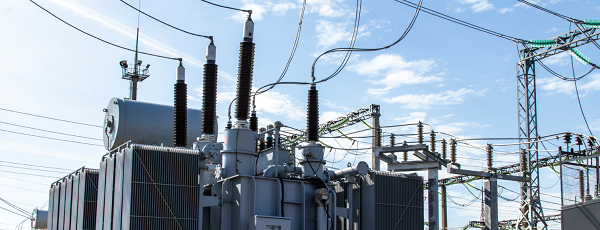LOAD FLOW STUDY
 Load flow study is the quintessential study as it aids in proper planning, design, and operation of generation, transmission, and distribution networks. The results of the study provide detailed insight into the steady-state performance under different operating conditions. Load flow is the basis for several other types of studies such as short-circuit, stability, motor starting, and harmonic, and protection studies as it brings out the initial steady-state behavior of the system.
Load flow study is the quintessential study as it aids in proper planning, design, and operation of generation, transmission, and distribution networks. The results of the study provide detailed insight into the steady-state performance under different operating conditions. Load flow is the basis for several other types of studies such as short-circuit, stability, motor starting, and harmonic, and protection studies as it brings out the initial steady-state behavior of the system.
Results of the study will be of great help in identifying the suitable operating conditions and in identifying the abnormalities such as equipment overloading, excessive voltage drop, poor power factor, and power loss conditions. Most importantly the analysis assists in the proper selection of continuous rating of equipment and in spotting out the need for voltage regulation devices and power factor correction devices.
This study can be carried out using ETAP, DIg SILENT Power Factory and PSS/E.
WHY LOAD FLOW STUDY?
- Toobtain the voltage magnitudes and angle, real reactive power value, current, power losses, voltage drop, power factor, etc.
- To identify the loading of equipment under various operating scenarios. (Example: Minimum and maximum load variation, grid voltage variation, tie-breaker closed, transformer, transmission line, and generator outage conditions)
- To identify the need for voltage regulating devices, power factor correction devices,
- To properly select taps for transformer and voltage set points for generator and inverter.
- To select the continuous rating of the equipment.
HOW TO PERFORM LOAD FLOW STUDY?
- Collection of inputs (SLD, Electrical data-sheetsof all equipment, and FAT reports (if available)
- Modelling the system in software
- Finalizing the study case scenarios (Scenarios will consider the system configuration changes, Grid voltage variations, loading variations, and other scenarios requested by the client)
- Carrying out simulation
- Submission of a detailed report
- Presentation of study findings
OUTCOMES OF LOAD FLOW STUDY
- Detailed report explaining the input data, study cases, observations and recommendations
- Presentation to easily spot out abnormal conditions like voltage limit violations, overloading conditions, and improper continuous rating selections.
- Proposing applicable solutions to address the issues. (Example – Power factor correction devices, Reactive power support devices)
- Base simulation model for short-circuit, stability, motor starting, and harmonic, and protection studies.
REFERENCE
1.IEEE 399-1997 – IEEE Recommended Practice for Industrial and Commercial Power Systems Analysis
2.IEEE 3002.2-2018 – IEEE Recommended Practice for Conducting Load-Flow Studies and Analysis of Industrial and Commercial Power Systems
